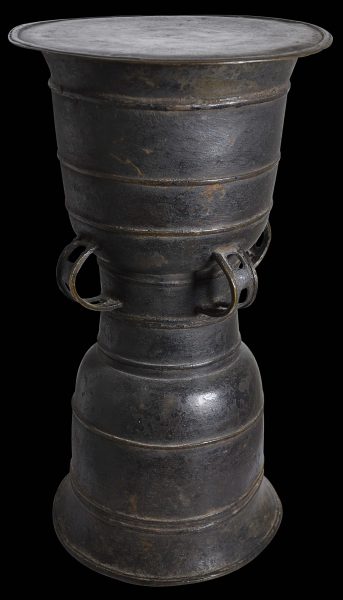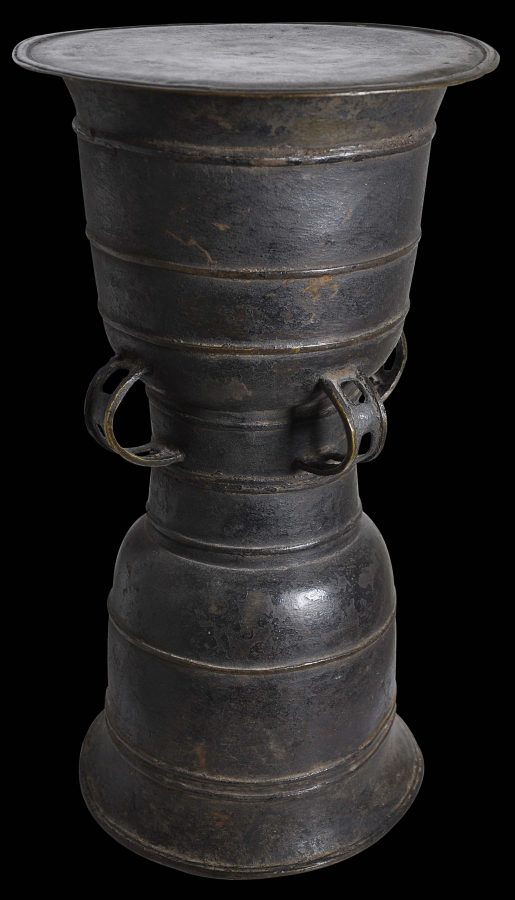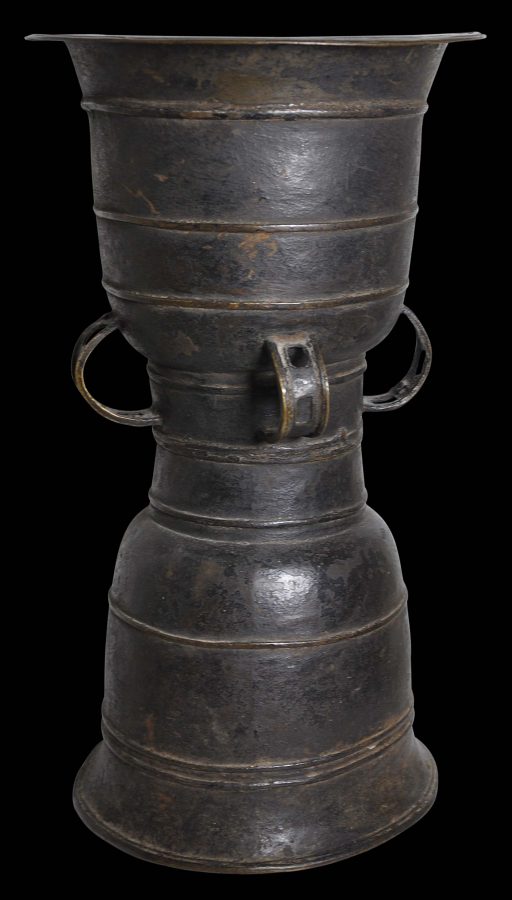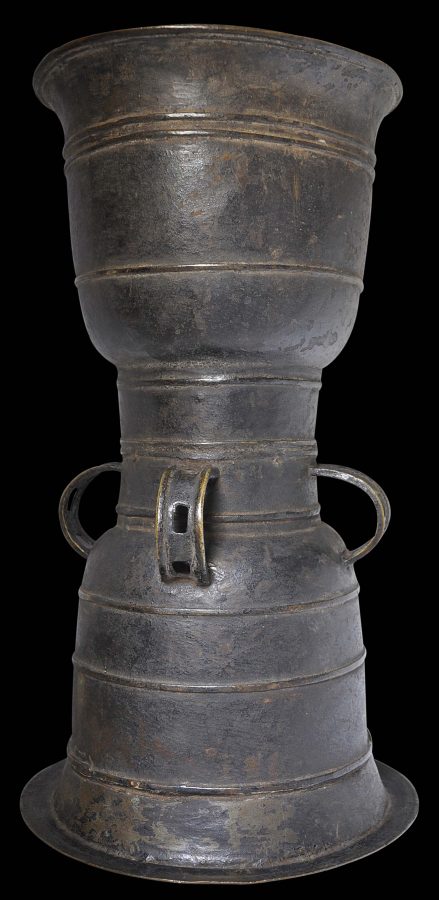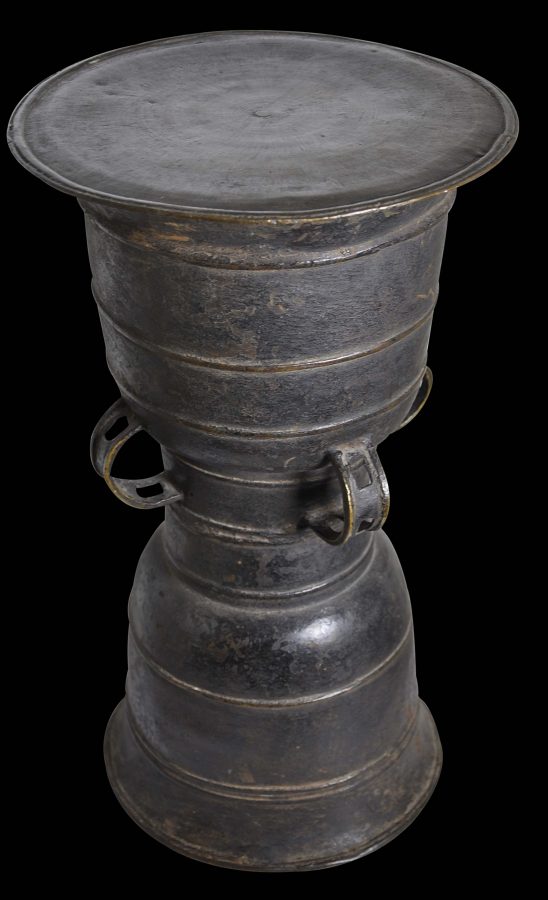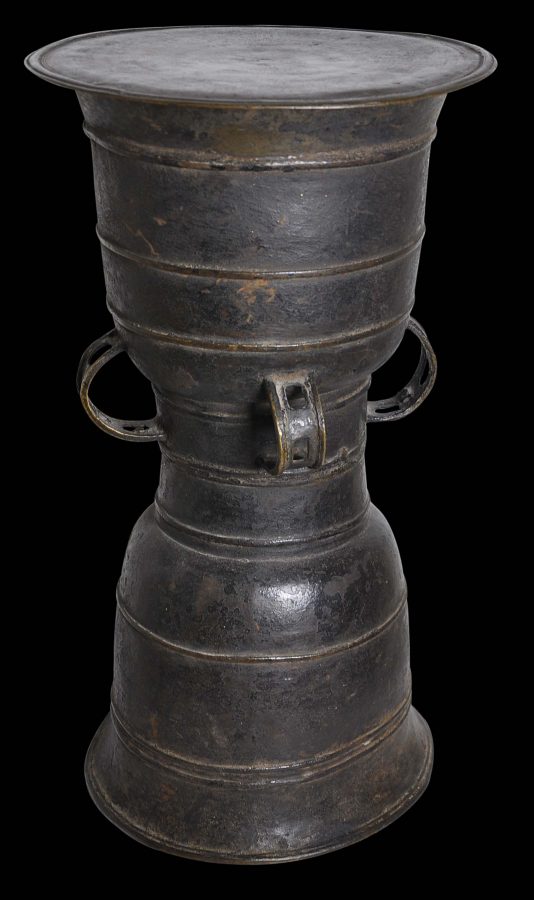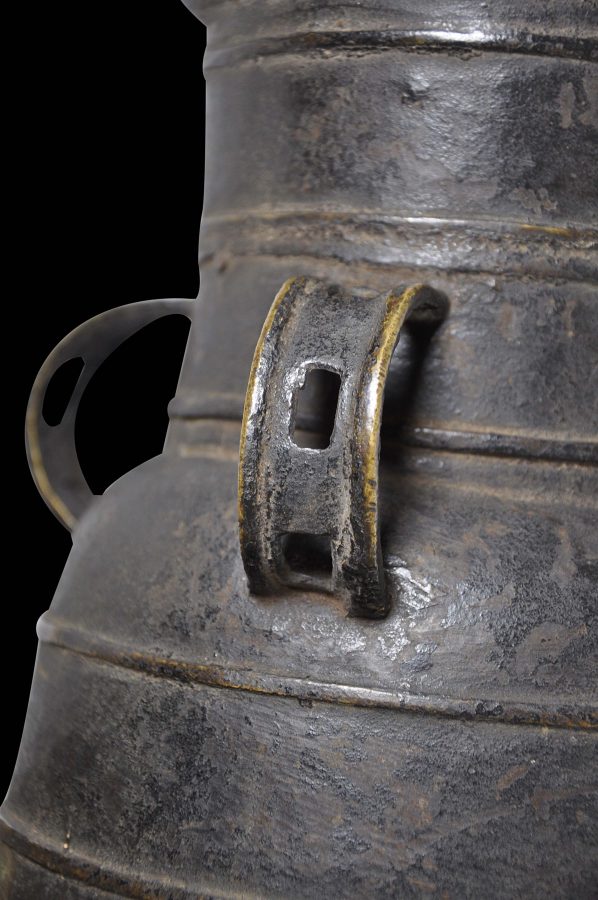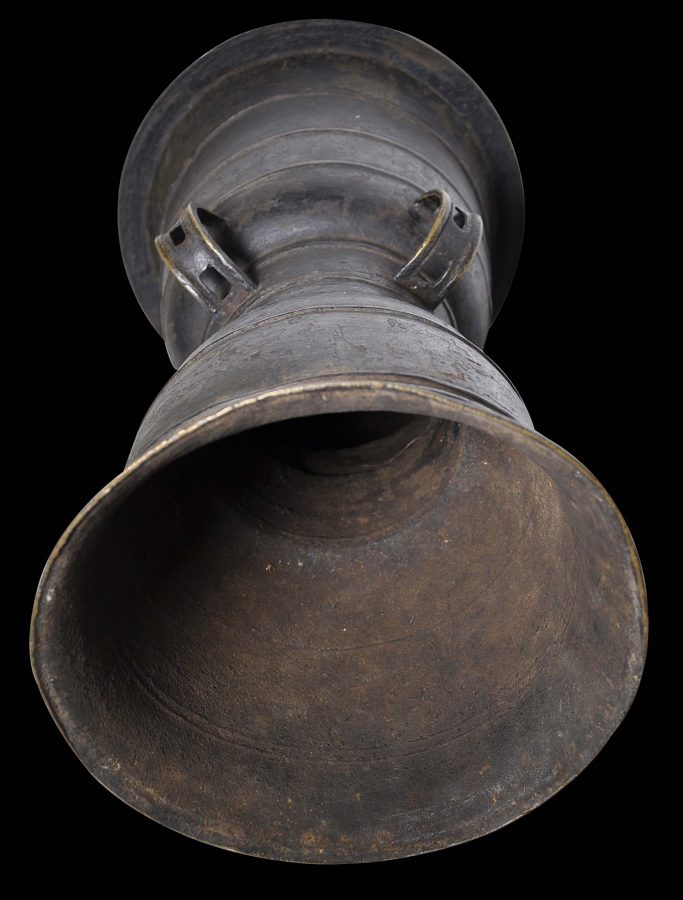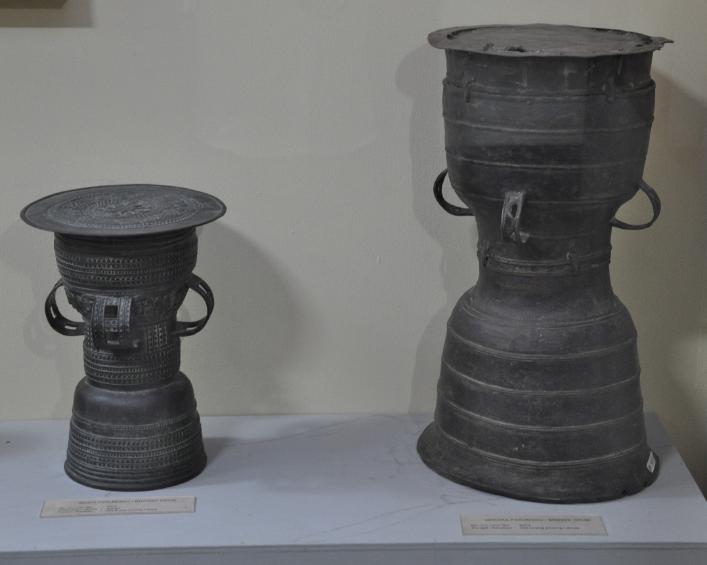This drum of cast brass is known as a moko. It has an hourglass shape that is decorated with concentric circles and four pierced handles that are placed equidistant around the upper body. The top of the drum is enclosed with a disk of sheet brass to serve as the tympanum. The other end is open.
The drum has excellent patina and obvious age. It is an earlier rather than a later example – later examples were more ornamented with more applied floral designs and show greater Chinese or Indian influence. Old mokos were considered to be the abode of ancestral spirits and were honoured as such.
Such drums were manufactured at Gresik in East Java from the late 19th century and were used on the Eastern Indonesian island of Alor to settle marriage-alliance gift exchanges and to be traded as currency for agricultural produce. Hundreds of mokos were introduced to Alor mostly by Bugis traders and the sudden influx proved inflationary and destabilising to the ‘currency’ and to the wider Alor economy. The Dutch authorities forbade the use of mokos as a general currency. They allowed tax payments to be settled with mokos however to try to draw as many mokos out of circulation as possible (Taylor & Aragon, 1991, p. 218). Mokos were occasionally used on Alor as musical instruments at important events. Their tops were struck with the palm of the hand. Mokos are illustrated in (Taylor & Aragon, 1991, p. 218) and Meulenbeld et al (1988, p. 204). A very similar, plainer variety example attributed to the 19th century is illustrated in Granucci (2005, p. 197).
The example here is in very fine condition and is without losses or repairs. As mentioned, it has an excellent patina.
The last image shows two moko drums on display in the Bali Provincial State Museum (Negeri Propinsi Bali), Denpasar, Bali. (Photographed in 2012.)
References
Granucci, A.F., The Art of the Lesser Sundas, Editions Didier Millet, 2005.
Meulenbeld, B.C.,et al,Budaya Indonesia: Arts and Crafts in Indonesia, Tropenmuseum, 1988.
Taylor, P.M. & L.V. Aragon,Beyond the Java Sea: Art of Indonesia’s Outer Islands, National Museum of Natural History/Harry N. Abrams, Inc,1991.


